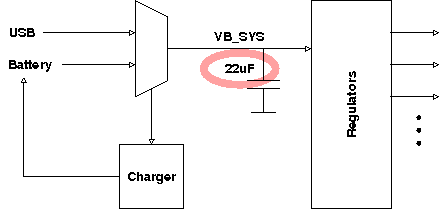
Further investigation revealed that the GTA02 turns off immediately if removing the battery and then activating the charger. The test procedure for this can be found here.
Furthermore, we observed that GTA02 would not start from USB if there is no battery present. We concluded that the charging issue and the failure to power on may have the same cause or are at least closely related. [JUSTIFY] We therefore focus now on solving the failure to power on.

This bypass exists in all GTA02v5 and GTA02v6 MP devices. Development prototypes may or may not have such a bypass.
The GTA02v5 device used in the experiments below has been reworked with a 10uF bypass. In some of the experiments, we add more capacitors.

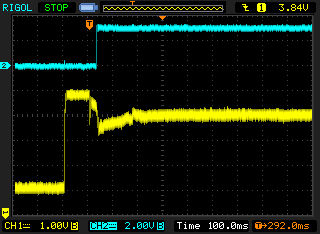
The strong noise visible in these measurements is caused by external sources which have no significant effect on device behaviour.
Timeline (time is relative to the trigger, "t"):
We now remove the 100uF bypass, so VB_SYS is only bypassed with 10uF.
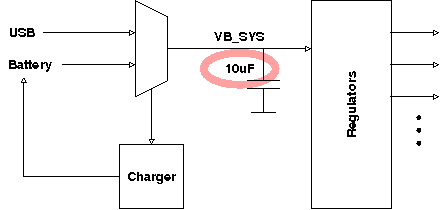

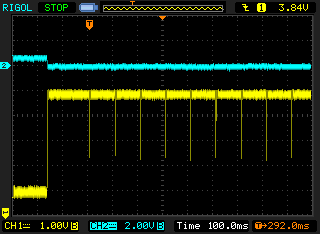
We now see that the VB_SYS drop is much deeper. This causes the PMU to abort the power-up process, and to retry after a few milliseconds. The exact interval seems to be variable. In the example shown here, it was measured to be exactly 100.64ms, but in most other experiments it was found to be around 34ms.
Note that the system never leaves reset. It is therefore not possible for the CPU to do anything at this point in time.
When we zoom into the VB_SYS drop, we see something like the following:
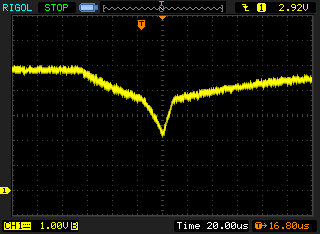
Note: this is a simplified view with a lot of averaging (to reduce the noise). The actual waveform can be more complex.


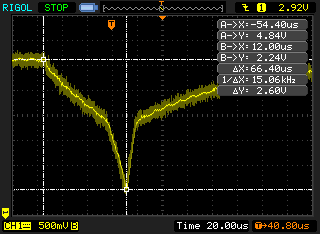
If we add another bypass of 10uF, thus increasing the total capacity to 20uF, we drop from 4.86V to 2.38V in 120us, corresponding to 1.5W.
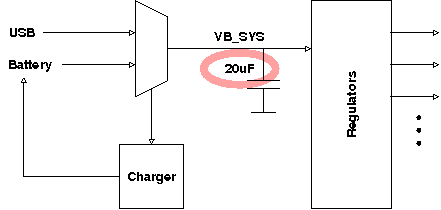

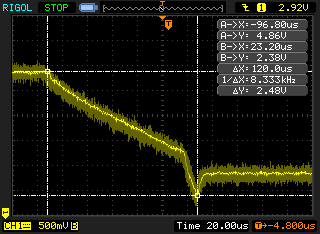
The following picture shows what we think happens in the various stages of the drop event:
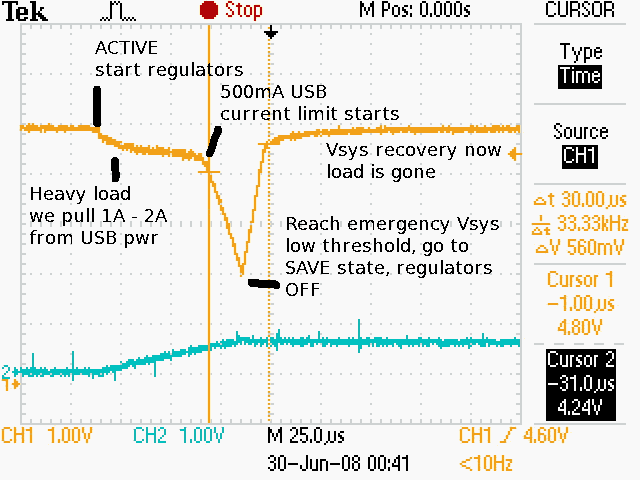
The orange curve is VB_SYS, the blue curve IO_3V3.
Werner noticed that enabling/disabling the charger changes how VB_SYS recovers after a drop, but does not affect the overall result. [ADD GRAPH]
This has now also been confirmed with Werner's GTA02v3. It survives enabling the charger while running as well, giving credibility to the theory that the two problems are closely related.
Unfortunately, as can be seen in the images below, it seems that the underlying problem also exists in GTA02v3. It just isn't bad enough to make the PMU abort the power-up sequence.
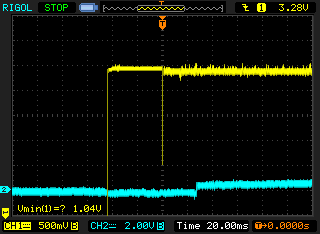

The yellow curve is VB_SYS on a GTA02v3 with a 10uF bypass on VB_SYS. The blue curve shows nRESET.
At least some GTA02v4 exhibit the problem as well in the same way as GTA02v5 and beyond.
Since we cannot change the inrush current limit for the secondary side of the PMU until after the system has come out of reset, we are considering to increase the VB_SYS bypass.
The effect changing the VB_SYS bypass has on USB inrush current is analyzed here.
Fri Jul 11 09:23:30 UTC 2008